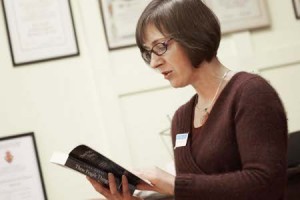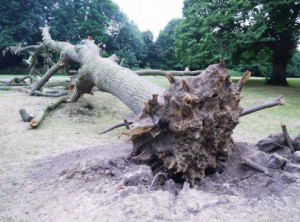Life can change in a split second. And there will be nothing you can do to stop it.
This intense and emotionally-charged portrait of a family deep in crisis will have you reflecting on all that you believe to be true.
‘Davis is a phenomenal writer whose ability to create well rounded characters that are easy to relate to felt effortless. Every person in the story could have easily been your next door neighbour or your best friend from school. The attention to these details instantly sucks readers into this world. In addition to the strong characters, Davis incorporates strong themes around religion, family, and loyalty that take this book to a whole new level of literary perfection.’ Extract from review by accreditation service, Compulsion Reads.
Jane, that’s praise indeed. You must be delighted.
Yes, it’s especially gratifying because this is my ‘difficult’ novel. To be honest, I wasn’t really sure how it would be received.
What is your genre? Why did you choose it?
Joanne Harris deals with this question very neatly by saying that she doesn’t insult her readers by assuming that they just like reading one type of fiction. A growing number of indie authors, including Linda Gillard, are selling themselves as a brand. Although it has to be done at the point of publication, categorising fiction is always a thorny subject. It’s something publishers insist upon and that readers are less interested in. The book clubs I visit enjoy a huge variety of fiction, but aren’t interested in categorising it, except in terms of quality. I must admit to being uncomfortable with the term ‘literary’. It can be off-putting to readers who associate it with a difficult or inaccessible read. Lit-lite was a useful buzz-phrase a couple of years ago, but seems to have fallen out of use. My readers tell me that what they like about my books is that they are all different. In the past month, reviews have compared me to Margaret Atwood, Joanna Trollope, Dylan Thomas, Tracy Chevalier, Audrey Niffenegger, Dorothy Koomson and Rachel Hore. The sub-categories for literary fiction are more useful. I currently have one e-book in the religious fiction chart and one in the historical fiction chart.
These Fragile Things tackles the subjects of near-death experience and religious fervour. These are big issues.
They are, and I am hardly qualified to tackle the questions fully. Orange prize-winner Francesca Kay said that she sees no reason why inexperienced novelists should avoid the big issues, but I wanted to bring the premise down to one very simple question: what happens to an ordinary family when their daughter claims to be seeing visions. Of course the dynamics of the family will shift, but can they survive it? This book is about the fragility of everything you hold dear and the threat of it being taken away. The idea that life can change in a split second and there is nothing you can do to stop it.
What was your own religious upbringing and how has this influenced the novel.
I have a difficult relationship with religion, and by that I mean formal religion. I was brought up as a Catholic. As a child, my life was filled with mythical beings and stories of great journeys and courage: of avenging angels; St George and the Dragon; Jonah and the whale; Noah and his ark; Jack and the Beanstalk; Daniel in the lions’ den; David and Goliath; Samson who lost his strength when his hair was cut; Little Red Riding Hood and Goldilocks and the Three Bears. Nobody seemed to consider the issue that children may not be able to distinguish between stories and ‘the truth’, and truth is very important to children. In those days, I didn’t think that there was any difference between God and Father Christmas. As Elvis Costello sang in the wonderful ‘God’s Comic’, “Sometimes they confuse me with Santa Claus. It’s the big white beard, I suppose.” But heaven forbid you should confuse fairies with angels, and so you were expected to learn: The Bible is true, Jack and the Beanstalk isn’t. Except that it doesn’t end there. ‘What, God didn’t really create the world in seven days?’ ‘No, that is just an illustration.’ ‘But everything else is true?’ ‘Yes, everything else is true.’ ‘Including the Prodigal Son?’ ‘No, that’s a parable. Parables are stories that illustrate issues and have moral endings.’ ‘Like fairy tales?’ ‘No! Not like fairy tales.’ And so it went on. Now we have so much more knowledge and archaeological evidence, it is being suggested that more and more of what we were taught was true was illustrative.
Everyone worries about how children will react when they find out that Father Christmas doesn’t exist. They spend far less time worrying about the moment when their child stops believing in God. I suppose that with Santa Claus, the impact of the blow is softened by the fact that stockings are filled with presents regardless. Where is the softener with regards to God? Who’s left steering the ship?
But you don’t become a lapsed Catholic overnight. I have returned to church many times over the years: when suffering from depression; for births and marriages; and particularly when mourning the loss of friends. Religion, at its best, brings people together to offer comfort and support and to celebrate life’s big events. I miss so much about it: singing in a big choir; the setting aside of Sunday as a special day. Karen Armstrong wrote ‘In the beginning, man created God.’ If that is true, it was either his most beautiful or his most diabolical creation.
And then, later, my work in insurance, forced me to deal with that wonderful question, ‘What is an ‘Act of God’? A legal term that’s still in use.

My reading of the book is that it’s about conflicts. Would you say that’s true?
Certainly. We have a father who claims that God answered his prayers for his daughter and hails her survival and subsequent recovery a miracle. He goes on to convert to Catholicism against his wife’s wishes. We have a mother who was present when the ambulances took her daughter away and knows with absolute certainty that it was men who saved her. She wants a scientific explanation for her what happens next. Can a marriage survive those differences in opinion? And then there is Judy who has to make sense of why she survived a near-death experience and its terrifying side-effects. Who, as an only daughter, tries to make diplomatic choices while treading her own path, wherever that may take her.
The book’s setting is Streatham in the Eighties. Why those choices?
I wanted my starting point to be ordinariness, albeit that there is a strong sense of a disaster waiting to happen. We have an accountant father who reads ‘Just Seventeen’ on the train and is horrified at how the media want to mould his daughter; a housewife who feels she is becoming increasingly invisible; a daughter who wears Garfield slippers and can’t work the washing machine, and hates the fact that her parents listen in on her telephone calls.
When researching visionaries, I came across the story of ‘Our Lady of Surbiton,’ which is close to where I live. Streatham is also close by, but has a more urban feel. To begin with I simply substituted the change in location into my working title. Streatham is somewhere I used to visit in my teens, mainly to go ice-skating. In recent years, it has mainly been where I have sat in traffic jams on the A23 on my way to the Brixton Academy. But it was once a genteel area. Its high street – the longest in Europe – was the favoured shopping destination for princesses. It has a variety of housing stock which attracts a mixed population. By the Eighties, its reputation had been tarnished by a certain Mrs Cynthia Payne and shaken by the overspill from the Brixton riots. I chose the Eighties for several reasons. Firstly, it was the decade when I was a teenager, and I was trying to tap into the mindset of a teenage girl. There was also the fact that I couldn’t find a more fertile decade for Marian visionaries within my lifetime. I also wanted to write about a big event that I could bear witness to: the Great Storm of 1987.
What was your experience of the Great Storm?
It was a very unreal experience for me. I was on holiday in Cornwall with a very good friend of mine. The last night of our holiday, to be precise. I woke in my room in the B & B with the bed shaking. My initial reaction was that it was an earthquake. I made the decision to hide under the blankets, but the shaking subsided eventually and I must have fallen back to sleep. The next day we travelled back to London by coach and, as we neared the Capital, the devastation got worse and worse. We had been out of touch with the news and had no idea what had happened. It was only later that I learned a storm could have caused this level of damage. My job in those days was handling insurance claims, and I spent the following three years dealing with people whose lives and livelihoods had been wrecked, and so I shared their stories. The demand for builders was so high that we still had some outstanding claims when the next big storm struck in 1990. I don’t know why but, faced with buildings that had been toppled and injured people, it is the images of the trees that have stayed with me. Trees, that had stood tall for hundreds of years, toppled like dominos.

There is a tree in your book that almost seems to be one of the characters.
I’m lucky enough to live in an area where there are several parks and I walk in all seasons, so trees are my calendars. There are many ancient examples, including one in Beddington Park that Elizabeth I is said to have sat under. During the writing of the novel, several of the large trees in the park either fell down or were felled because they were rotting from the inside out. I got a very good feel for the size of them and the extent of damage they could have caused. Carshalton can also lay claim to the tallest London Plane Tree. The tree that I describe is actually in Honeywood Walk. It’s a magnificent thing and I hope it outlives the lot of us.



